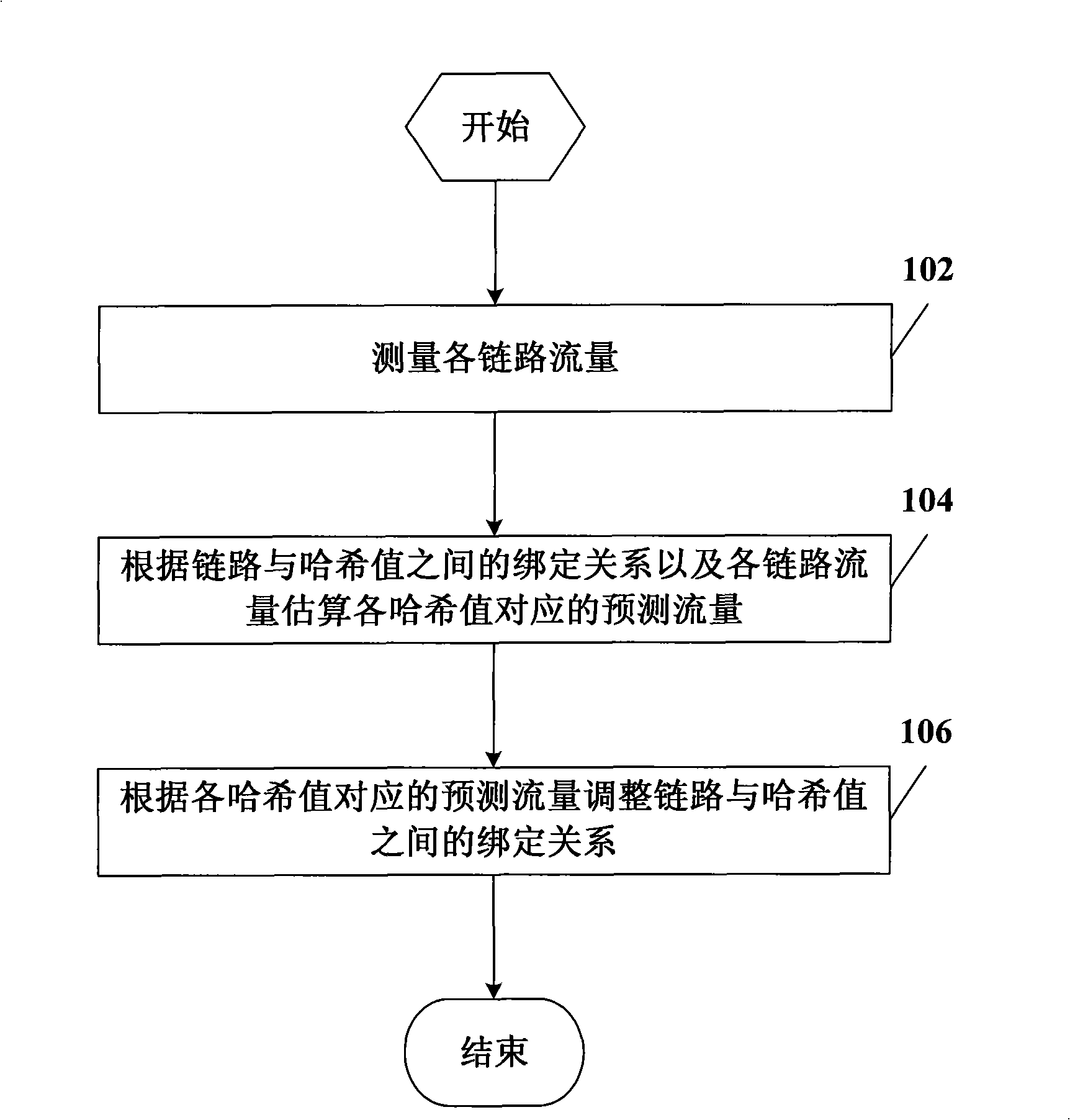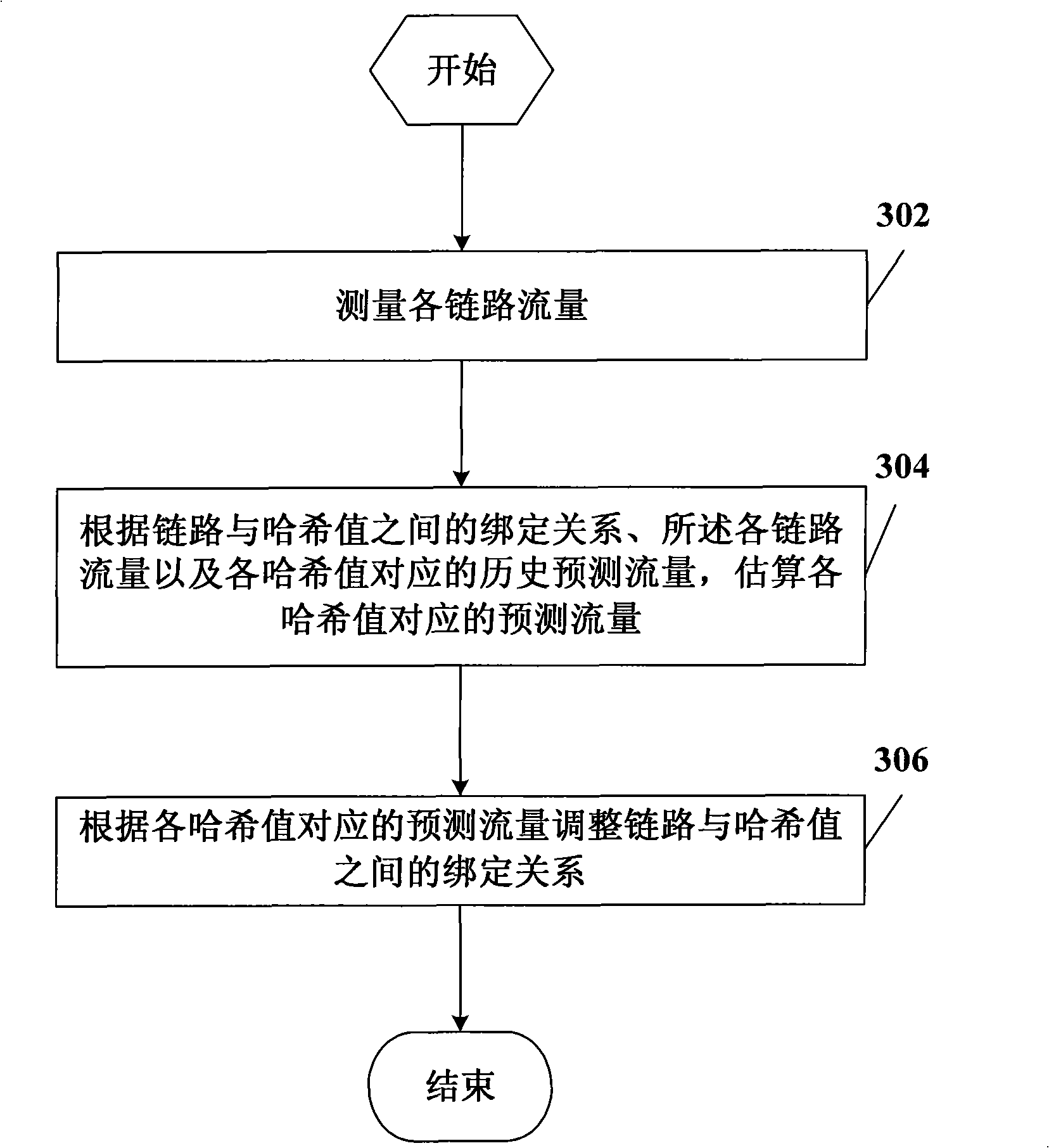Method and apparatus for regulating load share
A technology of load sharing and adjustment method, applied in the field of network communication, can solve problems such as poor load sharing, and achieve the effect of improving uniformity
- Summary
- Abstract
- Description
- Claims
- Application Information
AI Technical Summary
Problems solved by technology
Method used
Image
Examples
Embodiment Construction
[0022] Combine the following figure 1 and figure 2 An embodiment of the present invention is described:
[0023] figure 1 It is a flowchart of a load sharing adjustment method in an embodiment of the present invention. The method includes:
[0024] 102. Measure the traffic of each link.
[0025] For example, the links here may be trunk ports, tunnels, equal-cost routes, or other links that require load sharing. The traffic of each link can be measured regularly, and the measurement interval can be fixed or configured by the command line. For example, each link traffic can be measured every 5 minutes. It is also possible to measure the traffic of each link according to the traffic change. For example, set a traffic change threshold. When the traffic change between two measurements is greater than the threshold, the measurement time interval is reduced. When the traffic change between two measurements is smaller than the threshold increase the measurement interval. It i...
PUM
 Login to View More
Login to View More Abstract
Description
Claims
Application Information
 Login to View More
Login to View More - R&D
- Intellectual Property
- Life Sciences
- Materials
- Tech Scout
- Unparalleled Data Quality
- Higher Quality Content
- 60% Fewer Hallucinations
Browse by: Latest US Patents, China's latest patents, Technical Efficacy Thesaurus, Application Domain, Technology Topic, Popular Technical Reports.
© 2025 PatSnap. All rights reserved.Legal|Privacy policy|Modern Slavery Act Transparency Statement|Sitemap|About US| Contact US: help@patsnap.com



